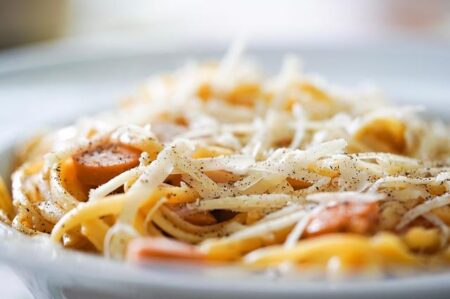Italy’s rich culinary tradition may soon receive one of the world’s highest cultural honors. Italian cuisine is under consideration to be inscribed on UNESCO’s Intangible Cultural Heritage list, a move that would formally recognize its deep historical roots, regional diversity, and integral role in Italian identity. The Florentine reports on how this potential designation highlights the significance of Italy’s food culture not only as nourishment but as a vibrant symbol of heritage and community life.
Italian Cuisine on the Verge of UNESCO Heritage Recognition
Italy’s rich culinary tapestry, renowned for its bold flavors and time-honored techniques, is on the cusp of receiving international recognition that could immortalize its cultural significance. From the rustic charm of Tuscan olive oils to the intricate art of handmade pasta, the culinary traditions represent more than mere food-they embody centuries of history, community, and identity. The nomination to UNESCO’s Intangible Cultural Heritage list highlights Italy’s commitment to preserving these living practices amid a rapidly globalizing world, ensuring future generations can savor and learn from these gastronomic treasures.
Key elements making Italian cuisine a strong candidate include:
- Regional diversity: Each area presents distinct ingredients and recipes, fostering local pride and culinary innovation.
- Tradition meets craftsmanship: Techniques such as pizza-oven baking, cheese aging, and wine-making involve generations of artisans.
- Social rituals: Meals serve as a cornerstone for family bonds and community celebrations across Italy.
- Global influence: Italian cuisine has inspired countless chefs and diners worldwide, making it a universal language of flavor.
| Category | Representative Dish | Region |
|---|---|---|
| Pasta | Tagliatelle al Ragù | Emilia-Romagna |
| Cheese | Parmigiano-Reggiano | Parma |
| Baked Goods | Focaccia | Liguria |
| Wine | Barolo | Piedmont |
Exploring the Rich Traditions and Regional Diversity Behind Italy’s Culinary Legacy
Italy’s culinary heritage is a vibrant tapestry woven from centuries of tradition and regional distinctiveness. From the sun-soaked coasts of Sicily to the alpine villages nestled in the north, each region champions a unique gastronomic identity, shaped by local ingredients, climate, and history. For example, the robust flavors of Tuscan ribollita contrast sharply with the delicate seafood dishes synonymous with Amalfi. This diversity highlights not only the country’s culinary creativity but also a deep sense of place that resonates through every bowl, plate, and glass.
Understanding this culinary mosaic entails appreciating several key elements that define Italy’s food culture:
- Seasonality: Emphasis on fresh, seasonal ingredients ensures that dishes evolve with nature’s rhythms.
- Regional Specialties: From Emilia-Romagna’s rich Parmigiano-Reggiano to Piedmont’s prized white truffles, local products elevate traditional recipes.
- Slow Food Influence: Founded in Italy, this movement champions sustainability, biodiversity, and artisan food production.
| Region | Signature Dish | Iconic Ingredient |
|---|---|---|
| Lombardy | Risotto alla Milanese | Saffron |
| Sicily | Arancini | Rice |
| Campania | Neapolitan Pizza | San Marzano Tomatoes |
| Veneto | Sarde in Saor | Anchovies |
Key Steps and Recommendations to Secure UNESCO Status for Italian Gastronomy
Securing UNESCO recognition requires a strategic blend of cultural validation and community engagement. Italian food traditions must be documented meticulously, emphasizing their historical roots and ongoing social significance. Collaboration among culinary experts, local artisans, and regional authorities is essential to present a unified proposal. This includes gathering testimonies, archiving recipes, and showcasing sustainable agricultural practices that connect the cuisine to Italy’s landscape and heritage. Public awareness campaigns should be launched early, highlighting how gastronomy serves as a living cultural expression-uniting regions through shared rituals such as festivals, family gatherings, and seasonal celebrations.
Transparency and compliance with UNESCO’s criteria are paramount. Stakeholders should focus on:
- Demonstrating Intangible Heritage: Illustrate how Italian gastronomy embodies tradition passed down through generations.
- Ensuring Community Involvement: Engage locals and practitioners to guarantee authenticity and continued practice.
- Promoting Diversity: Highlight the regional varieties that create a rich and multifaceted culinary landscape.
- Documenting Preservation Efforts: Present initiatives aimed at maintaining food-related knowledge and biodiversity.
| Key Area | Action Plan | Impact |
|---|---|---|
| Documentation | Compile archival recipes and oral histories | Establishes historical legitimacy |
| Community Engagement | Host local food festivals and workshops | Strengthens cultural identity |
| Sustainability | Implement farm-to-table supply chains | Supports environmental resilience |
| Regional Diversity | Promote distinct culinary traditions | Showcases Italy’s gastronomic variety |
In Retrospect
As the bid for Italian cuisine to be recognized as UNESCO World Heritage gains momentum, it underscores the profound cultural significance and global appreciation of Italy’s culinary traditions. From the rich flavors of Tuscany to the vibrant dishes of Naples, this potential designation not only celebrates Italy’s gastronomic heritage but also highlights the role of food in shaping national identity and community. Should the application succeed, it will mark a historic moment for Italian cuisine and reaffirm its place on the world stage as a treasure to be preserved and cherished. The coming months will be crucial as Italy awaits the final decision, with food lovers and cultural advocates alike poised to celebrate what many consider the heart and soul of Italian culture.




